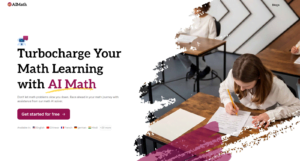
Today we’re going to talk about an exciting topic – types of learning from a psychological perspective. This article intends to expand our understanding of the types of learning described by classical psychologists. Our essays writer, Nellie Burges, has tried to make this article as informative and easy to understand as possible. So, let’s save time and move on to the first point.
CLASSICAL CONDITIONING
Another of the most relevant types of learning is classical conditioning. Conditioning produces behavioral modifications by establishing an association between a given stimulus and a given response.
The first to investigate conditioning was the Russian physiologist Ivan Pavlov: in his most famous experiment, he started by considering that the salivation of dogs in front of food was an unconditioned reflex, that is, an innate response of the organism.
He then noticed that the dog salivated not only when it came into direct contact with the food but also upon hearing an acoustic signal that the experimenter had managed to associate with the delivery of the food constantly. This animal reaction was called a conditioned reflex in the absence of the relative stimulus.
TRIAL AND ERROR LEARNING
Even before Skinner’s work, Thorndike had shown that learning takes place by trial and error. A cat or a monkey was locked in a cage, and they needed to open the enclosure.
Animals have made unsuccessful attempts to arrive at the correct sequence. When they returned to the cell, they repeated the right line without error and came out. On these bases, Thorndike elaborated what is known as the “law of effect.”
OPERANT CONDITIONING
It was mainly B. F. Skinner who continued studying conditioning, elaborating on the so-called instrumental or operant conditioning. This type of learning aims to produce new behaviors through a series of reinforcements.
Skinner’s best-known experiment concerns a hungry rat housed in a cage in which a lever with an empty tray is placed next to it: simply pressing the lever is enough to activate the mechanism for the food to enter the container. The rat will first do this accidentally, but it is constantly reinforced by the food produced due to pressing the lever. It will repeat the behavior more and more often. In this case, the subject’s response (pressing the lever) is instrumental in the reward production.
SENSITIZATION
Sensitization is the general increase of an organism’s response to weak stimuli following a noxious stimulus.
Let us consider an example. At night, while we sleep, our house alarm starts to ring for two seconds due to a false contact. We are going to wake up and go to explore the environment to see if someone has entered.
Although we realize that the burglars have not entered, we cannot sleep: we feel terror at every noise in the house we ignored before. We have become sensitized to a noxious stimulus (the sound of the burglar alarm), so we respond in an amplified way to any noxious stimulus (the noises in the house). This simple form of learning also proves to be adaptive.
IMPRINTING
Imprinting is a form of learning by which the young of some animal species, starting from the first days of life, develop an assertive attachment behavior to a particular object, which they also maintain as adults.
IMITATION OR INDIRECT LEARNING
The next type of learning is vicarious learning. As Bandura calls it, imitation or “observational” learning promotes acquiring skills, information, and behaviors simply by observing and listening to other people. Although Bandura does not consider reinforcement necessary, he does not exclude its occurrence; indeed, the punishment or praise received by the model results in reinforcement for the observer and a reinforcement called vicarious reinforcement.
Vicarious reinforcement contributes to the development of the subject’s capacity for self-regulation, who, by observing the behavior of others, gathers information that helps him abstract the rule, evaluate actions, and acquire behavioral norms.
ACTIVE LEARNING
Active learning occurs when a person controls their learning experience. Since understanding information is fundamental to learning, it is essential to recognize what is understood by what is not understood. Active learning encourages an internal dialogue in which agreements are verbalized.
Studies within metacognition have demonstrated the value of active learning; furthermore, people have more incentive to learn when they control how they know and what they learn. Active learning is a fundamental characteristic of learner-centered learning; in contrast, passive learning and direct education are the characteristics of teacher-centered learning (or traditional education).
SITUATED LEARNING
Another critical approach in constructivism is situated or localized learning, which affirms that understanding develops from participation in activities, concrete contexts, and relationships with people. Authentic learning is always situated: therefore, there can be no abstract learning from a situation; moreover, from the learner’s point of view, it is usually unintentional and is characterized as a natural derivation of authentic interaction.
PROJECT-BASED LEARNING
Project-based learning or problem-based learning is a type of learning that occurs during the process of solving a challenge, question, problem, or case. Investigating and learning to solve the problem or find answers to the questions is necessary. Today, it is considered one of the most successful educational methodologies.





![The Oldest American College Football Teams [Top 14] 26 AtlanticRide](https://www.atlanticride.com/wp-content/uploads/2021/04/image-2-150x150.jpeg)






